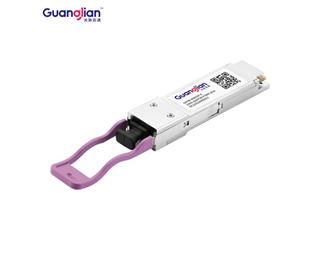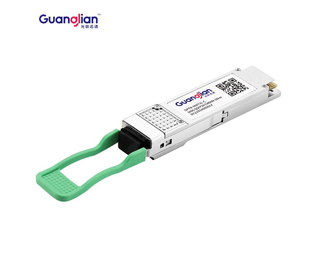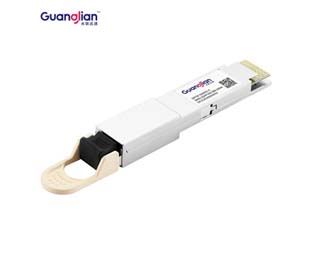SFP is short for the small form factors. It refers to a fibre optic transceiver that supports a 1Gbps data rate. In addition to SFP, there are many different types of fibre optic transceivers on the market today, such as QSFP, QSFP+ and QSFP28. At first glance, these transceiver modules look very similar. In reality, however, they are very different. A clear understanding of these differences is beneficial in making the right choice for your network connection. So what are the differences between QSFP, QSFP+ and QSFP28?
The "Q" in QSFP means quad (4 channels). QSFP is a compact, hot-pluggable transceiver for data communications. QSFP specifications support Ethernet, Fibre Channel, InfiniBand and SONET/SDH standards with different data rate options. QSFP transceivers support network links over Singlemode or multimode fibre patch cables. QSFP modules are typically available in several different types. 4x1G QSFP, 4x10G QSFP+, 4x28G QSFP28. From this aspect, QSFP and QSFP+ have the same small size as QSFP28. Literally, QSFP uses 4x1G channels and is only found in some FC/IB environments.
100GBASE-QSFP28-LR4-10km Optical Transceiver Module
QSFP+ transceivers, on the other hand, have evolved from 4x1G channels (QSFP) to 4x10G channels and are designed to support 40G Ethernet, Serial Attached SCSI, QDR (40G) and FDR (56G) Infiniband as well as other communication standards. the QSFP+ standard is the SFF-8436 document, which specifies transceiver machinery with a latching mechanism The QSFP+ module integrates 4 transmit and 4 receive channels as well as sideband signals. The QSFP+ module can then be broken down into four 10G channels. QSFP+ modules are used to connect switches, routers, host bus adapters (HBAs), enterprise data centres, high-performance computing (HPC) and storage. However, some people may think that QSFP is the same as QSFP+, especially in the Ethernet space.
The difference between QSFP+ and QSFP28 is "28", as the name suggests. QSFP28 is a hot-swappable transceiver module designed for 100G data rates. QSFP28 integrates four transmit and four receive channels." 28" means that each channel can carry data rates of up to 28G. The QSFP28 can do 4x25G breakout connections, 2x50G breakout connections, or 1x100G, depending on the transceiver used. Whereas the QSFP+ supports 40G data rates with 4 channels for transmitting and 4 channels for receiving, each carrying 10G. QSFP+ can be broken into 4x10G or 1x40G connections.
100GBASE-QSFP28-PSM4-500m/2km Optical Transceiver Module
Normally QSFP28 modules cannot break out to 10G links. However, if the switch supports it, it is another case to insert the QSFP28 module into the QSFP+ port. One thing to note is that you cannot put a QSFP+ transceiver into a QSFP28 port to avoid damaging the optics.
The difference between QSFP vs QSFP+ vs QSFP28 has been stated clearly in this article. Though QSFP is thought of as QSFP+, when talking about 40G, actually we mean QSFP+. QSFP+ vs QSFP28 mainly differs in data rate and breakout connection. So you must be sure what you need is 40G QSFP+ or 100G QSFP28 for high-density applications, especially when connecting with 10G SFP+.
Guanglian has developed a series of DPI optical modules for network security monitoring applications in optical transmission networks, which can even meet the information security requirements in 5G networks. Our technology, Our competitive advantage. Our 100G QSFP28 can solve all compatibility problems for you, contact us!
100G CFP vs QSFP28: Which One to Choose?
Jun. 11, 2022What Makes the Best Optical Transceiver Module?
May. 27, 2022200G QSFP56 Optical Module Knowledge Full Explanation
Apr. 25, 2022
100G CFP vs QSFP28: Which One to Choose?
Jun. 11, 2022
What Makes the Best Optical Transceiver Module?
May. 27, 2022Copyright ©Guanglian Xuntong Technology Group Co., Ltd. All Rights Reserved | Sitemap
